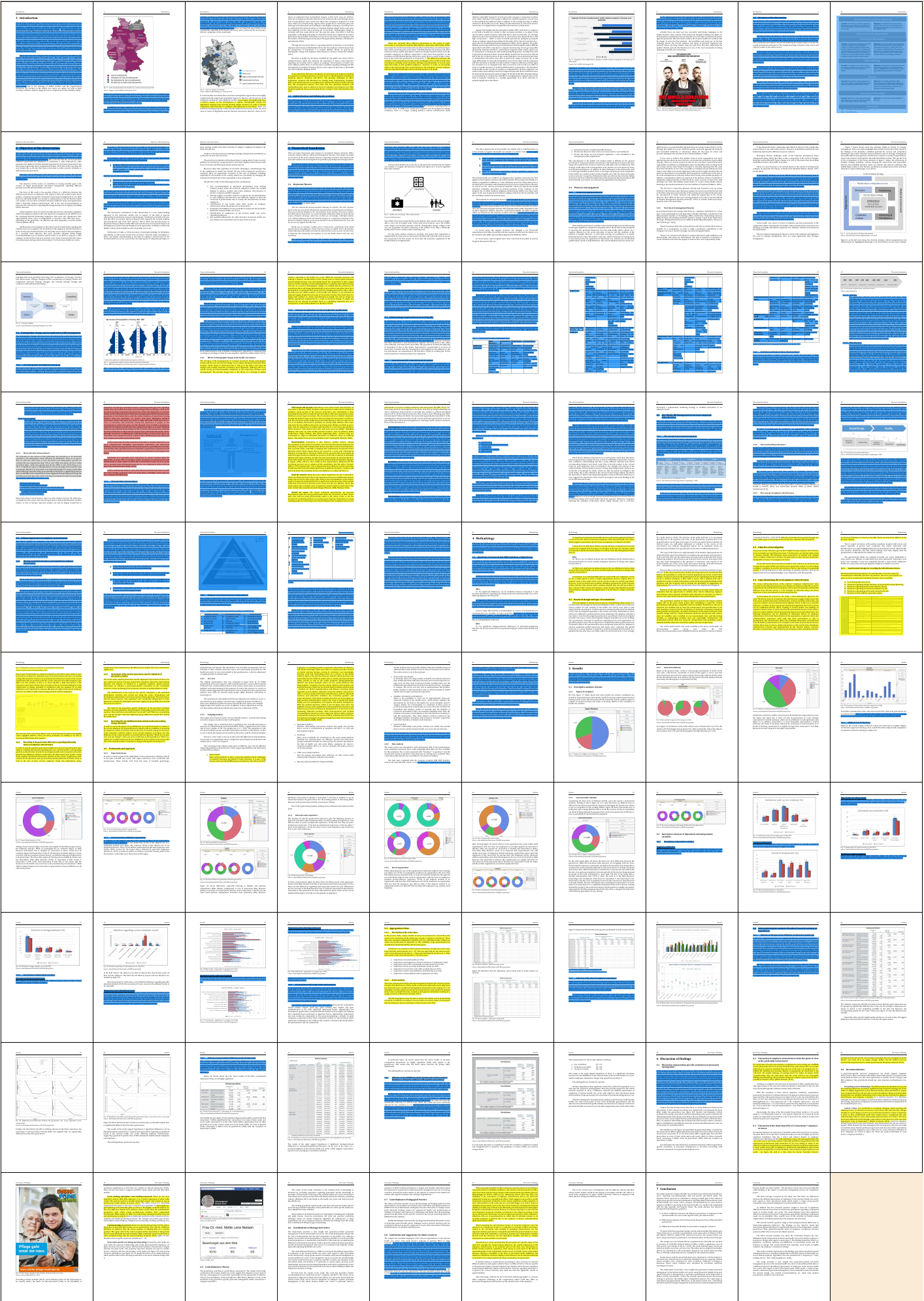Overview
- Problematic text parallels can be found in the following chapters (state of analysis: XXX):
- 1 Introduction [1]
- 2 Objective of the dissertation 11
- 3 Theoretical foundation 14
-
- 3.2.1 Classical management theories 17
- 3.2.2 Post classical management theories 18
- 3.3 Demographic change and its implication of HR management 21
- 3.4 Human image of generations in working life 25
- 3.5 Specifically HR Management to increase employer attractiveness 38
- 3.5.1 The concept of personnel management 38
- 3.5.2 The term health professional 39
- 3.5.3 The concept of employer attractiveness 39
- 3.6 Influencing factors on employer attractiveness 41
- 3.6.1 Meeting occupational needs as a prerequisite for employer attractiveness 41
- 3.6.2 Employer attractiveness factors of Generation Y 43
- 4 Methodology [46]
- 4.1 Questions of research and differentiation of hypotheses 46
- 4.2 Research design and type of examination 47
- 4.3 Objective of investigation 49
- 4.4 Operationalizing the term employer attractiveness 49
- 4.4.1 Questionnaire design for recording the attractiveness factors 50
- 4.4.2 Recording of the generation differences regarding influencing factors on employer attractiveness 51
- 4.4.3 Assessment of the need for generation-specific alignment of personnel activities 52
- 4.4.4 Recording the non-fulfillment of job-related needs and resulting change intentions 52
- 4.5 Framework and approach 52
- 4.5.1 Expert interviews 52
- 4.5.2 Pre-Test 53
- 4.5.3 Sampling method 53
- 4.5.4 Data analysis 55
- 5 Results 57
- 5.1 Descriptive analysis of items 57
- 5.1.1 Region of workplace 57
- 5.1.2 Generation division 58
- 5.1.3 Highest level of education 60
- 5.1.4 Current position within the organisation 62
- 5.1.5 Relevant work experience 64
- 5.1.6 Size of organisation 65
- 5.1.7 Least bearable situation 67
- 5.2 Descriptive analysis of dependent and independent variables 68
- 5.2.1 Description of dependent variables 68
- 5.2.2 Description of independent variables 71
- 5.2.3 Presentation of the results of the open question 74
- 5.3 Aggregation of data 75
- 5.3.1 Description of the scale values 75
- 5.3.2 Factor analysis 75
- 5.3.3 Summary of the desired employer Generation Y 77
- 5.4 Inferential statistic analysis: Results of research on basis of hypotheses 79
- 6 Discussion of findings [88]
- 6.1 Discussion of generation specific orientation of personnel management [88]
- 6.2 Discussion of employer attractiveness from the point of view of the preferable Generation Y [89]
- 6.3 Discussion of the desired profile of a Generation Y employer of choice [89]
- 6.4 Recommendations [90]
- 6.5 Contributions to Theory [93]
- 6.6 Contributions to Managerial Practice [94]
- 6.7 Contributions to Pedagogical Practice [95]
- 6.8 Limitations and suggestions for future research 95, 96
- 7 Conclusion [98].
Prominent findings
- ...
Source issues
- Ruthus (2013): ...
- Out of XX sources identified for documented text parallels, XX of them are not mentioned in the thesis at all.
- There are several phantom references, in-text references that are not elaborated in the reference section.
See for example the following documented text sections, which include 'phantom references':
- Fragment 034 01: (Iyengar & Lepper, 2000), (IBE, 2013)
- Fragment 037 01: (Meinert, 2010), (Wang, 2010)
- Fragment 038 03: (Klaffke 2011)
- Fragment 042 01: (Drumm, 2008).
- There are some in-text references found in the text of the dissertation that do not actually correspond with what is being asserted in the previous sentence or paragraph. These can be referred to as garnish references, they are used to give the impression of scholarship without correctly attributing a statement or summary to the true source. See following documented text sections: Fragment 031 20
- eg
Other observations
- ...
- According to the supervisor's evaluation paper (PDF) the author "started her PH.D. studies in 2017 in the part-time of studies".
- In the "Statutory declaration" (p. V), the author states:
"Herewith I declare that I have written my final thesis: [...] by myself and all sources and data used are quoted in the list of references."
- The "Study and Examination Regulations of Mendel University in Brno" (PDF) valid at the time of submission specify:"
- Article 24
Doctoral study program
"(1) Doctoral study programmes are, pursuant to Section 47 of the Act, focused on scientific research and independent creative activity in the fields of research or development or on independent theoretical and creative activity in the arts."
- Article 24
- Article 33
State doctoral examinations
"(1) The state doctoral examinations verify the ability and readiness for independent activity in the field of research or development or for independent theoretical and creative activities in the arts."
- Article 33
- Article 34
Dissertation
"(1) A dissertation must include original and published results or results received for publication.
- Article 34
Statistics
- Currently there are 92 reviewed fragments documented that are considered to be violations of citation rules. For 73 of them there is no reference given to the source used („Übersetzungsplagiate“, „Verschleierungen“ and „Komplettplagiate“). For 19 fragments the source is given, but the extent of the used text is not made clear („Bauernopfer“).
- The publication has 99 pages that have been analyzed. On a total of 73 of these pages violations of citation rules have been documented. This represents a percentage of 73.7%. The 99 analyzed pages break down with respect to the amount of text parallels encountered as follows:
- From these statistics an extrapolation of the amount of text of the publication under investigation that has been documented as problematic can be estimated (conservatively) as about 42% of the main part of the publication.
- In all, text was taken from 22 sources.
Illustration
The following chart illustrates the amount and the distribution of the text parallel findings. The colours show the type of plagiarism diagnosed:
- [...]
(state of analysis: XXX)
